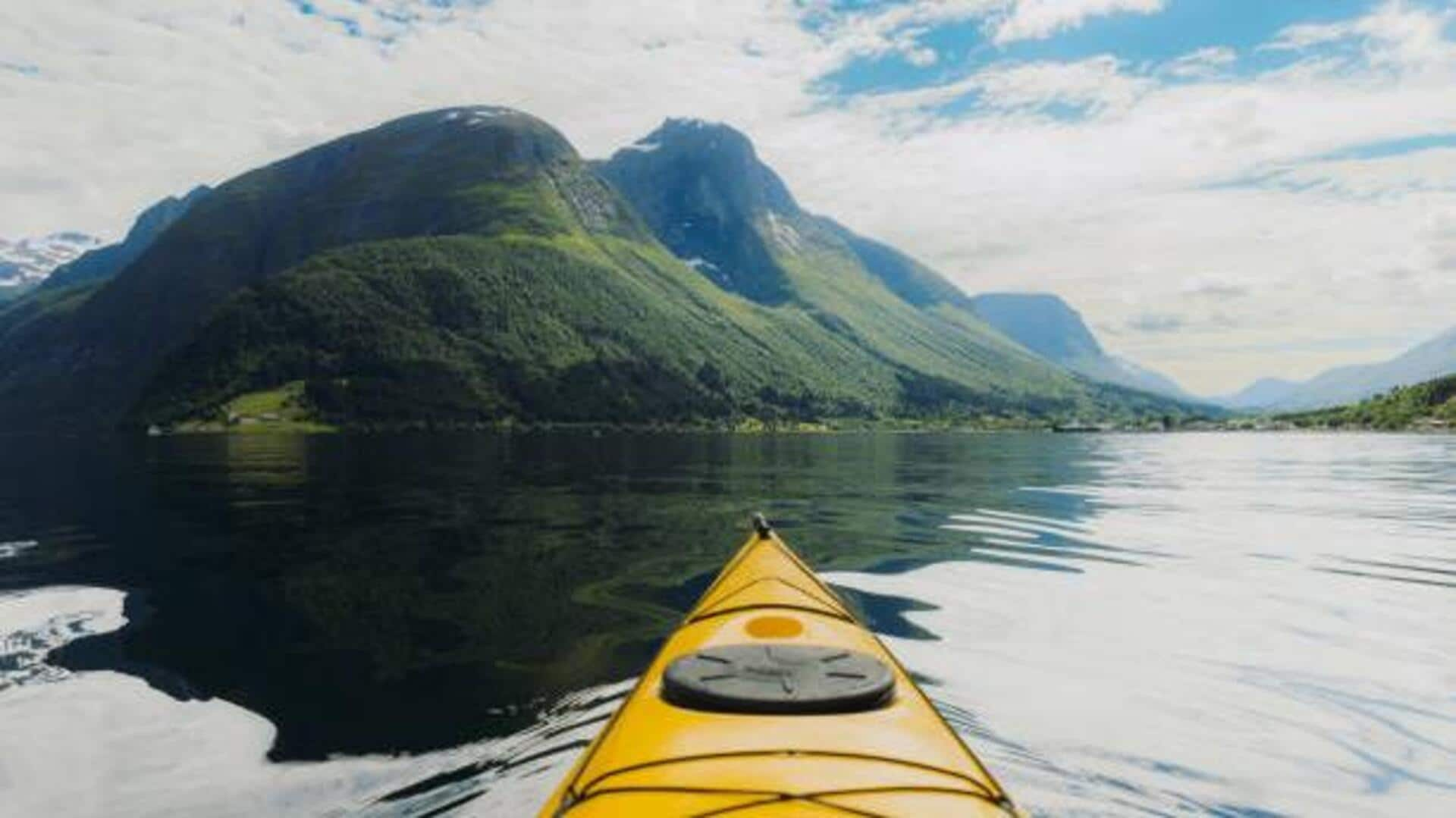
Kayaking in Scandinavia: Top spots, tips, and must-knows
What's the story
Kayaking through the hidden fjords of Scandinavia is one of the best adventure experiences you can ever have. These natural wonders, sculpted by glaciers, give you the most captivating landscapes and serene waters waiting to be explored. With several fjords spread across Norway, Sweden, and Finland, each one comes with its own beauty and challenge. Here's looking at some tips and ideas for those planning this thrilling trip.
Geirangerfjord
Exploring Norway's Geirangerfjord
Norway's Geirangerfjord is one of the most famous fjords in the world, known for its deep blue waters and towering cliffs. Kayakers can paddle through serene waters while witnessing breathtaking waterfalls like the Seven Sisters. The area is also rich in wildlife, where you can spot seals and porpoises. If you're interested in history, you can find abandoned farms along the cliffs, telling stories of past inhabitants.
Sarek National Park
Discovering Sweden's Sarek National Park
Home to some of the most remote fjords in Scandinavia, Sweden's Sarek National Park, is a true gem. Known for its rugged terrain and untouched wilderness, the park offers a challenging yet rewarding kayaking experience. Less crowded than other areas, adventurers can connect with nature without distractions. Paddlers should be prepared for unpredictable weather conditions but will be rewarded with stunning views of snow-capped peaks.
Archipelago Sea
Finland's Archipelago Sea adventure
The Archipelago Sea in Finland is a one-of-a-kind kayaking experience with its thousands of islands. Perfect for newbies or those looking to unwind, its placid waters invite you to discover tiny islands, varied bird species, and greenery. Quaint villages dotting the area give a glimpse of the local culture.
Safety tips
Tips for safe fjord kayaking
Safety is paramount when kayaking Scandinavian fjords. Always check weather forecasts, as conditions can swiftly change. Wear life jackets and appropriate gear to combat sudden temperature drops, especially in areas with cold currents from glaciers or mountains. Coastal regions may experience high winds and waves unexpectedly, so plan ahead for emergencies.